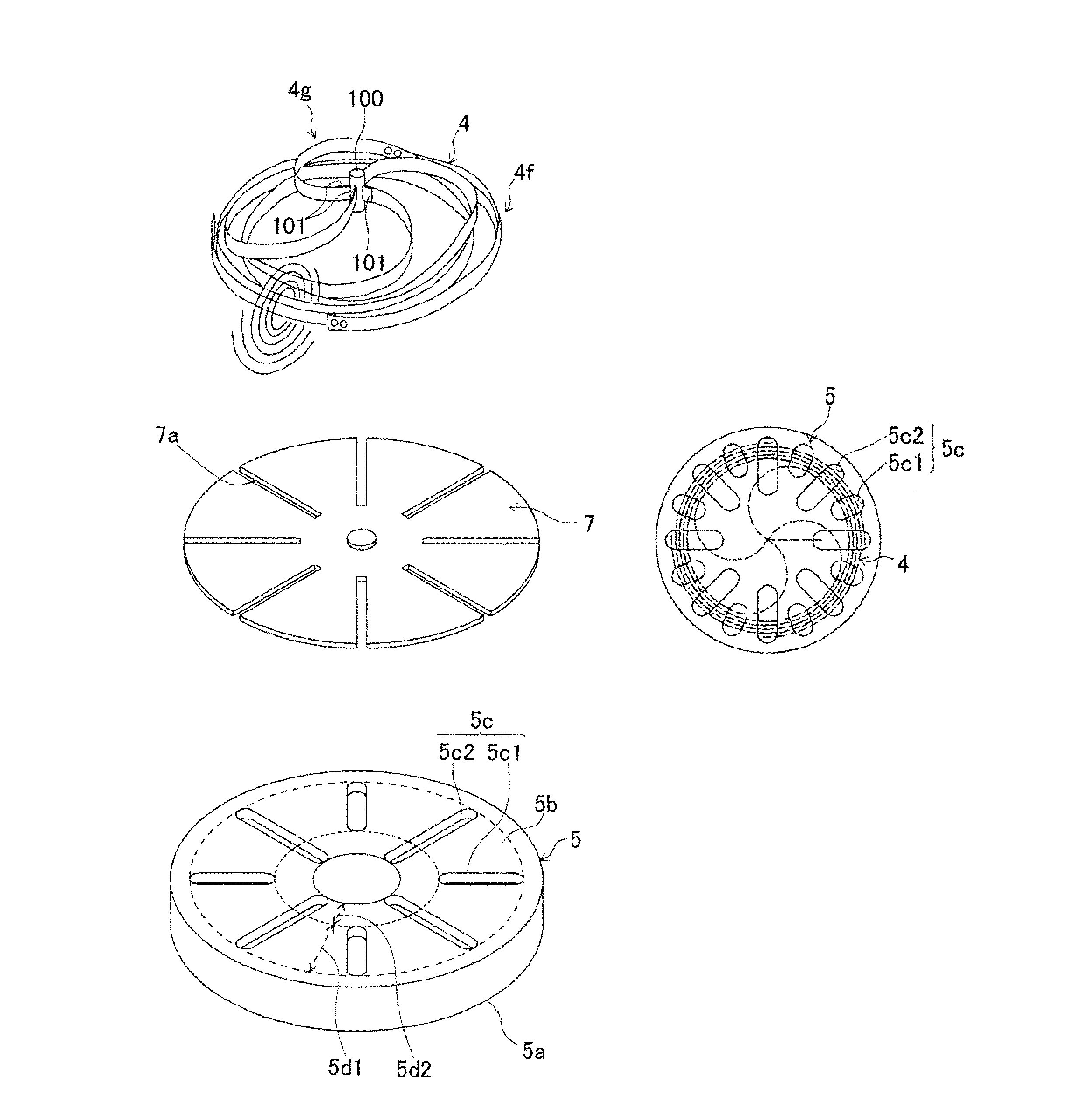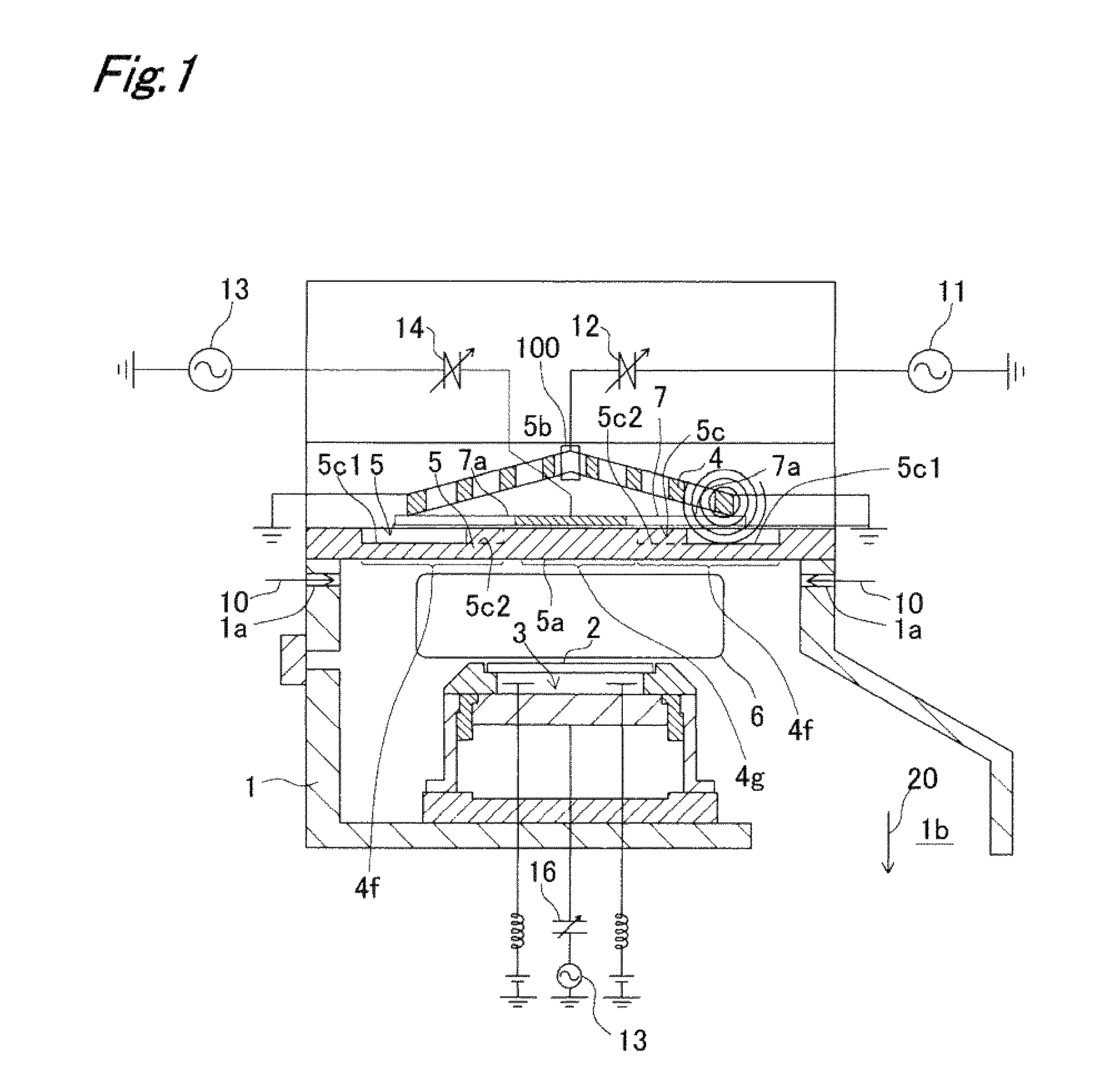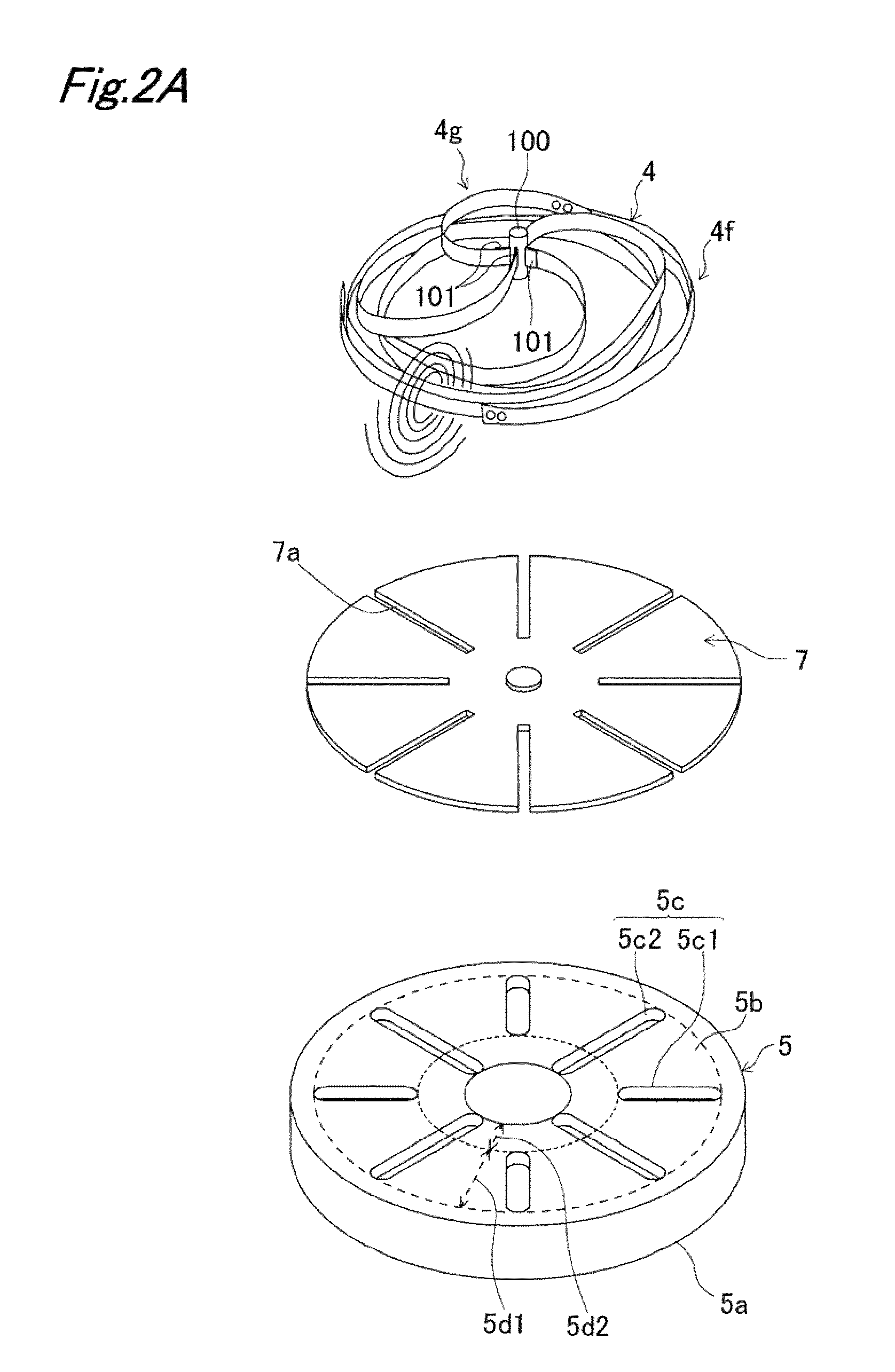Plasma etching apparatus
a technology of etching apparatus and plasma, which is applied in the direction of chemical vapor deposition coating, coating, electric discharge tube, etc., can solve the problems of high component manufacturing and assembly cost, complex structure, and high price of components, and achieves the effect of enhancing the application power efficiency, simple and low-cost structure, and sufficient pressure strength
- Summary
- Abstract
- Description
- Claims
- Application Information
AI Technical Summary
Benefits of technology
Problems solved by technology
Method used
Image
Examples
first embodiment
[0075]FIGS. 1 to 2B show a plasma etching apparatus according to a first embodiment of the invention. This plasma etching apparatus includes: a chamber 1 which can be depressurized and which supplies a reactant gas 10 through a supply port 1a and discharges an exhaust gas 20 through an exhaust port 1b; a placement section 3 which is provided on a lower side within the chamber 1 and which holds a placed object 2 to be treated by electrostatic attraction or clamping (not shown) or the like; and a high-withstand-pressure dielectric member 5 which forms a partition wall for sealing the upper opening of the chamber 1. The plasma etching apparatus also includes a coil 4 for inductive coupling which is provided at an upper portion of the high-withstand-pressure dielectric member 5 so as to face the placement section 3 and which transforms the reactant gas 10 within the chamber 1 into a plasma 6 by inductive coupling so that the plasma acts on the object 2 held at the placement section 3 to...
second embodiment
[0114]FIGS. 10A and 10B show a plasma etching apparatus according to a second embodiment of the invention.
[0115]Semiconductor wafers, which are objects treated by plasma processing, have been increasing in diameter more and more, as large as 200 mm to 300 mm at the present time, while the chambers for treating wafers have been further increasing in inner diameter, as large as 320 mm to 450 mm. Still more, etching has been attaining higher precision while the etching depth has also been increasing. In order to meet these requirements, there is a need for generating plasma more uniformly and more vigorously over a wide area. For this purpose, it is effective to exert a high level of radio frequency induction magnetic field or inductive coupling power from the higher-density distribution area of the coil of the peripheral-portion side annular area on the peripheral portion side of the high-withstand-pressure dielectric member in correspondence to the supply of the reactant gas into the...
third embodiment
[0126]FIG. 12 shows a plasma etching apparatus according to a third embodiment of the invention.
[0127]In this embodiment, a coil system 4a in which the number of turns is increased in the peripheral-portion side annular area, and a coil system 4b in which the number of turns is increased in the central-portion side annular area, are placed so as to be turned and expanded from different heights in upper and lower two stages, independently of each other, through a common central support shaft 100, where both coil systems 4a, 4b have their number of turns increased in one identical plane. Also, with a splitter 19 provided, radio frequency powers are supplied to the individual coil systems 4a, 4b, independently of each other, from a common power source 11. As a result of this, supply amount of the radio frequency power can be controlled for each of the coil systems 4a, 4b, i.e., for individual radial areas of the high-withstand-pressure dielectric member 5, so that plasma generated in t...
PUM
| Property | Measurement | Unit |
|---|---|---|
| inner diameter | aaaaa | aaaaa |
| inner diameter | aaaaa | aaaaa |
| orthogonal angle | aaaaa | aaaaa |
Abstract
Description
Claims
Application Information
 Login to View More
Login to View More - R&D
- Intellectual Property
- Life Sciences
- Materials
- Tech Scout
- Unparalleled Data Quality
- Higher Quality Content
- 60% Fewer Hallucinations
Browse by: Latest US Patents, China's latest patents, Technical Efficacy Thesaurus, Application Domain, Technology Topic, Popular Technical Reports.
© 2025 PatSnap. All rights reserved.Legal|Privacy policy|Modern Slavery Act Transparency Statement|Sitemap|About US| Contact US: help@patsnap.com



